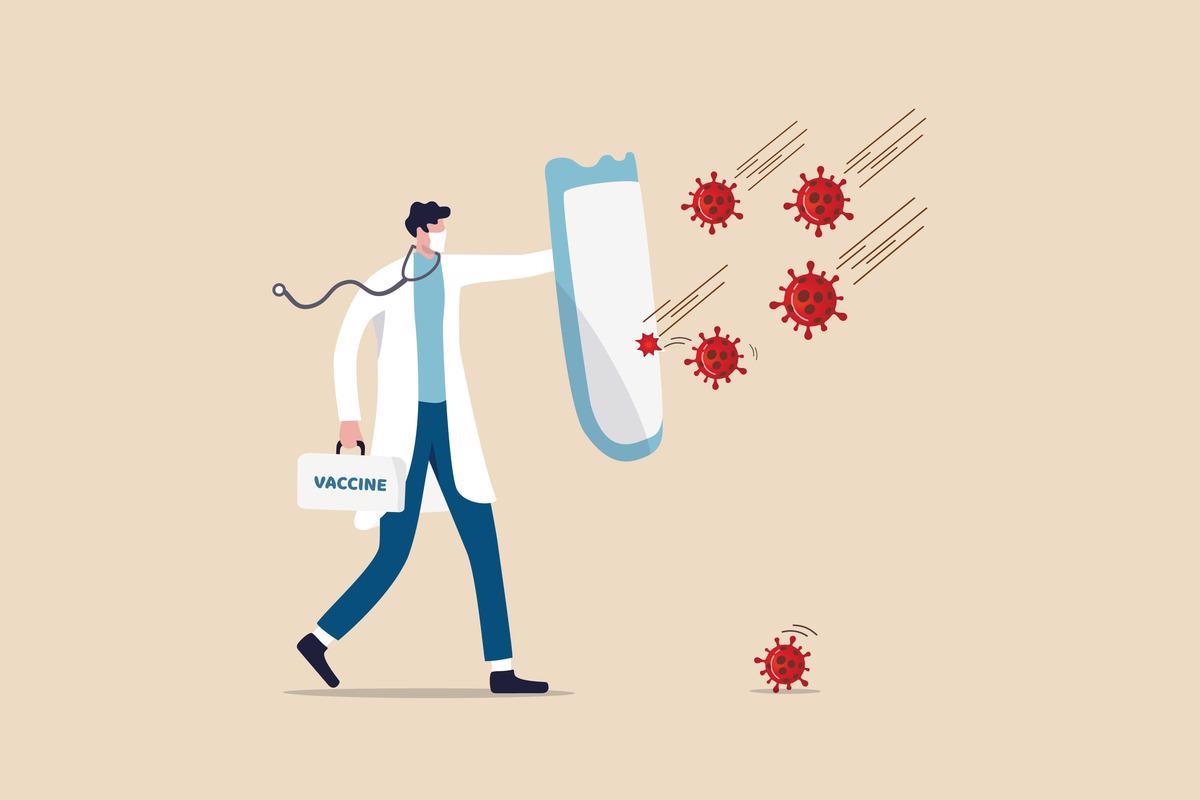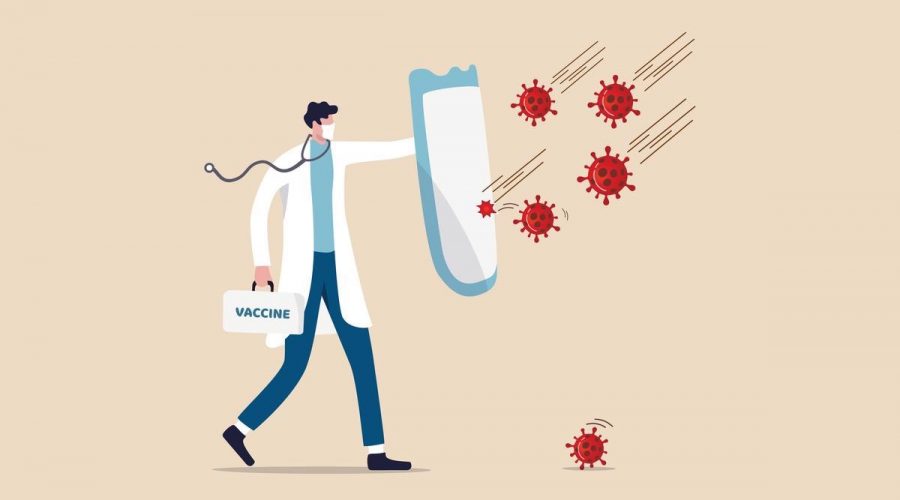The war against COVID-19: reinfection, vaccines, and herd immunity
Different technological platforms are being used to protect against severe acute respiratory syndrome coronavirus 2 (SARS-CoV-2) – the causative pathogen for coronavirus disease 2019 (COVID-19). However, vaccine-acquired immunity tends to wane with time. Additionally, the constant viral evolution is likely to render immunization less effective. A communication published in the journal Epidemiologia aimed to answer several questions concerning neutralizing antibodies against SARS-CoV-2, herd immunity, and COVID-19 vaccines.

Can infection with SARS-CoV-2 provide life-long immunity against the virus?
Adaptive immunity acquired from exposure to SARS-CoV-2 induces immunological memory that aids in suppressing the disease severity on subsequent exposures to the same virus. On reinfection, antibodies derived from the B lymphocytes (short-lived plasma cells) and the long-lasting plasma cells derived from bone marrow (BMPCs) retain antibodies-producing capacity for many years.
Evidence suggests that people with prior SARS-CoV-2 infection had a lower risk for infection than those who were seronegative to the pathogen. This protective effect was shown to last for about seven months post the primary infection.
Yet, long-lasting immunity does not translate to the prevention of reinfection; this is evident by the lack of herd immunity among populations despite the rampant infection rates and fatalities.
Of note, the severity of the primary infection is crucial for the quality of immune memory and affinity maturation. In other words, the immune response could be impaired in individuals who suffered severe COVID-19 symptoms during their primary exposure to the pathogen compared to those who had mild or no symptoms. Furthermore, in people with mild COVID-19, the efficient antibody response that enables rapid symptom resolution was found to be longer-lasting.
The decrease or waning of antibody levels with time––which has been demonstrated after five months of the primary infection––also affects the reinfection potential. Nevertheless, detectable levels of anti-spike immunoglobulin (Ig)G antibodies circulate for nearly one year after the primary infection. The circulating neutralizing antibodies level, independent of the patient’s age, can impact the duration of symptoms and infection severity.
A major determinant of reinfection and immunity loss is the emergence of newer SARS-CoV-2 variants of concern with higher transmissibility and more efficient immune escape capacities. Both vaccine- and prior-infection-induced immunities have a limited protective effect against the newer SARS-CoV-2 variants. Widespread viral transmission prompts novel mutations. Therefore, precautionary measures like mask-wearing, physical distancing, and hand hygiene are imperative to reduce the infection risk.
Can vaccines alone stop COVID-19 infection?
Available COVID-19 vaccines stimulate adaptive immunity against various SARS-CoV-2 Spike (S) proteins and reduce the incidence rates of symptomatic and asymptomatic infections. Researchers have found that the BNT162b2 mRNA vaccine led to a 70% decline in symptomatic and asymptomatic infections due to the B1.1.7 (Alpha) variant only a few days after its first dose and an 85% decline a week after its second dose.
This protection lasts for about seven to eight months, after which the neutralizing antibodies decay and the risk for infection reinstates. The majority of post-vaccination infections have been attributed to the newer SARS-CoV-2 variants.
Vaccine efficacy for the B.1.351 (Beta) variant was reportedly 57% against moderate-to-severe symptoms; 89% against severe symptoms for the Ad26.COV2.S vaccine; and nil against mild-to-moderate symptoms for the ChAdOx1 nCoV-19 vaccine.
Scientists have implicated E484K, del142–144, T95I, and D614G SARS-CoV-2 mutations in SARS-CoV-2 breakthrough infections. Uneven vaccine distribution across the globe and reduced access for some populations have also deterred from achieving the expected vaccination coverage and adequate herd immunity.
Children play a major part in the community spread of SARS-CoV-2 variants of concern. Furthermore, vaccinated individuals still harbor infectivity. Although COVID-19 symptoms may not manifest in these people, they can still transmit the pathogen.
Vaccinated individuals with SARS-CoV-2 Delta variant infection could sustain viral loads equivalent to those of the unvaccinated. However, at present, testing of vaccinated individuals after pathogen exposure has not been suggested at present.
The inactivated virus vaccines can trigger a broad range of antibody responses. The World Health Organization (WHO) approved a vaccine against the SARS-CoV-2, developed by Sinopharm was, in May 2021. Nevertheless, reports indicate that the mRNA-based vaccines were more efficient and confer longer-lasting protection than the inactivated virus vaccines.
Additional modalities, for instance – a combination of S, nucleoprotein, and ORF3a sequences generates neutralizing antibodies and shows CD8 T cell responses against the virus in most immunized people. These results suggest that the implementation of pan-vaccines could help in outsmarting the virus.
Breakthrough infections and herd immunity
Natural infections
Numerous breakthrough infections have been documented across nations. In Manaus city, Brazil, herd immunity was expected to have been achieved between June-October 2020 due to the peak in SARS-CoV-2 prevalence rate – from 60 to over 70%. However, the region saw a tremendous resurgence of infections owing to the new variant of concern – P.1 (Gamma).
Vaccination
Waning antibody levels are also said to stimulate SARS-CoV-2 mutations and variant emergence. Despite Massachusetts (USA) having already achieved four million vaccinations among its 7.-3 milion population, the Department of Public Health of Massachusetts reported overall 7,737 COVID-19 breakthrough infections until 3 August 2021 in fully vaccinated people. Further, this accorded for 395 hospitalizations and 100 fatalities.
Genomic sequencing of 133 patients depicted B.1.617.2 (Delta)variant as the cause for 89% of the infections, with one patient having Delta AY.3sublineage. The findings emphasize the need for greater vaccination coverage in the younger age groups as these individuals had the lowest coverage and incomplete vaccination statuses.
Vaccination remains the most important and efficient strategy to prevent severe COVID-19 illness and the associated morbidity and mortality. Hence, the necessity of SARS-CoV-2 vaccine booster doses is being propagated across the globe, particularly for the elderly––with the same vaccine brand or combined vaccine doses. However, whether this strategy can ensure protection against newer variants remains obscure.
It has been proposed that the acquired herd immunity may not protect from reinfection but could likely enhance the probability of building up hybrid immunity after vaccination. However, herd immunity against SARS-CoV-2 decreases within 6-12 months.
Factors impacting immunity decay in hosts are – viral factors, host immunity factors, or vaccine ingredients, and may also precipitate due to a combination of these factors.
Solutions
The current COVID-19 pandemic needs to be combatted at multiple levels. These include – vaccine promotion, encouraging booster doses, re-engineering existing vaccines, recommending combined vaccines, targeting emerging variants, and impeding viral transmissions and adverse impacts on healthcare systems and the global economy. Other measures suggested are – the use of antibody-based immunotherapy like – convalescent plasma and i.v. immunoglobulins; monoclonal antibodies (mAb). In fact, multiple mAb combinations – bamlanivimab plus detesevimab; casirivimab plus imdevimab (REGEN-COV); sotrovimab plus a long-acting anti-SARS-CoV-2mAb combination; and tixagevimab plus cilgavimab (Evusheld), that act against SARS-CoV-2 have received Emergency Use Authorizations (EUAs) from the United States Food and Drug Administration (FDA).
Furthermore, non-pharmaceutical preventive measures are indispensable at this juncture, such as – protective masks, disinfection of public areas, surface sanitization, and social distancing, despite vaccination coverage.
- Redwan, E. et al. (2022) "Would New SARS-CoV-2 Variants Change the War against COVID-19?", Epidemiologia, 3(2), pp. 229-237. doi: 10.3390/epidemiologia3020018. https://www.mdpi.com/2673-3986/3/2/18
Posted in: Medical Science News | Medical Research News | Disease/Infection News
Tags: AIDS, Antibodies, Antibody, Bone, Bone Marrow, Cell, Children, Convalescent Plasma, Coronavirus, Coronavirus Disease COVID-19, covid-19, Disinfection, Efficacy, Evolution, Food, Genomic, Genomic Sequencing, Hand Hygiene, Healthcare, Hygiene, Immune Response, immunity, Immunization, Immunoglobulin, Immunotherapy, Mortality, Pandemic, Pathogen, Public Health, Respiratory, Sanitization, SARS, SARS-CoV-2, Severe Acute Respiratory, Severe Acute Respiratory Syndrome, Sotrovimab, Syndrome, Vaccine, Virus

Written by
Nidhi Saha
I am a medical content writer and editor. My interests lie in public health awareness and medical communication. I have worked as a clinical dentist and as a consultant research writer in an Indian medical publishing house. It is my constant endeavor is to update knowledge on newer treatment modalities relating to various medical fields. I have also aided in proofreading and publication of manuscripts in accredited medical journals. I like to sketch, read and listen to music in my leisure time.
Source: Read Full Article
